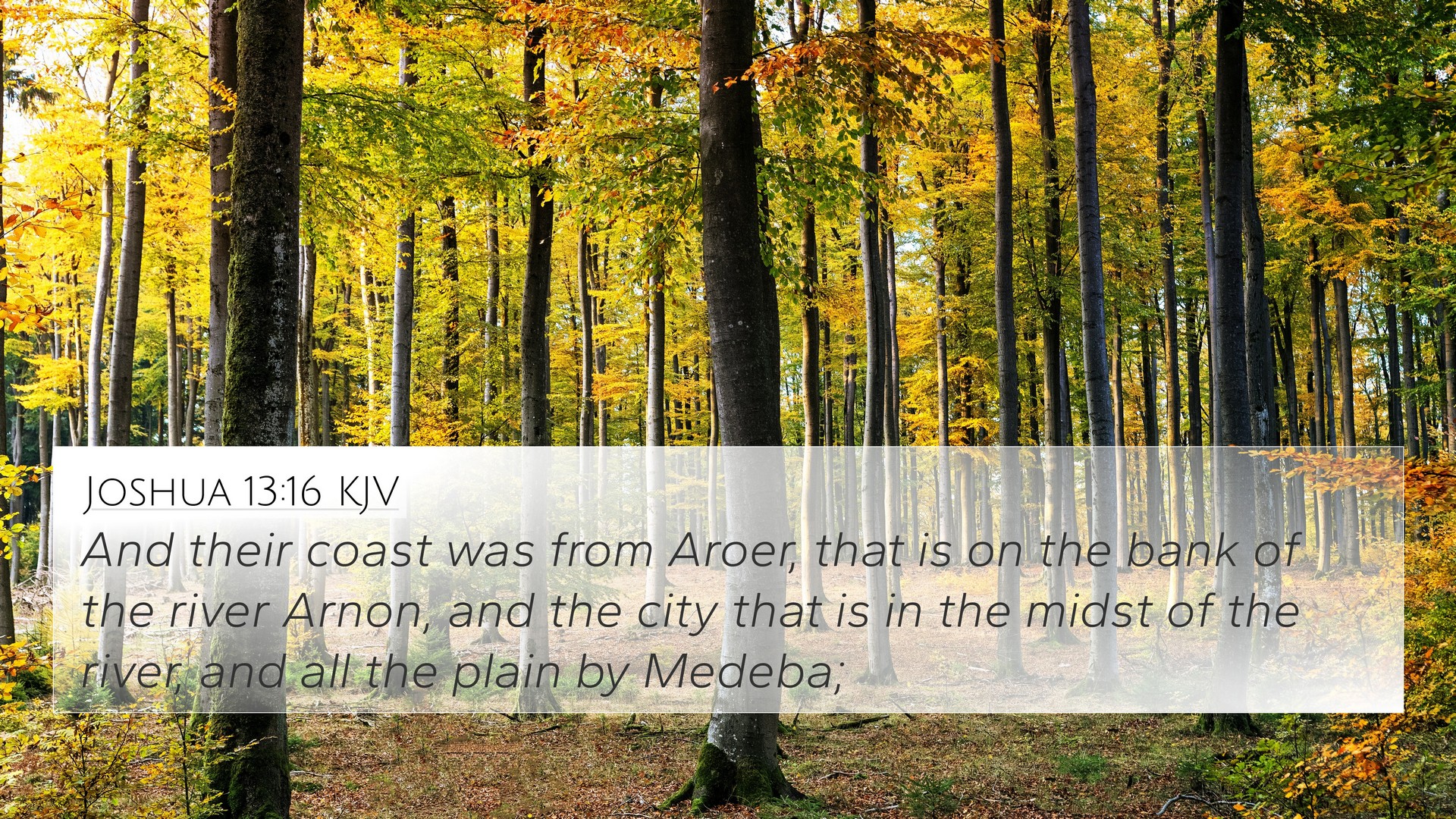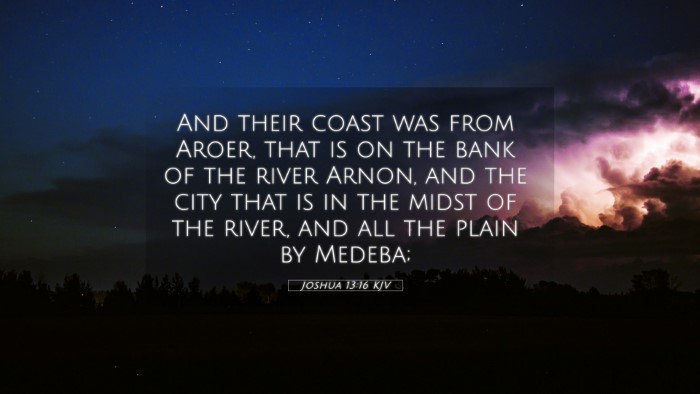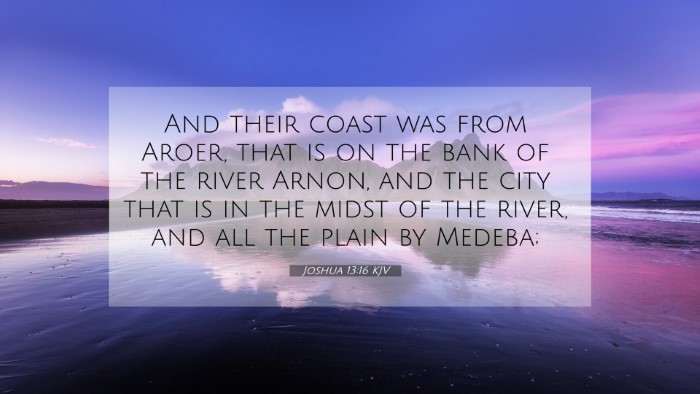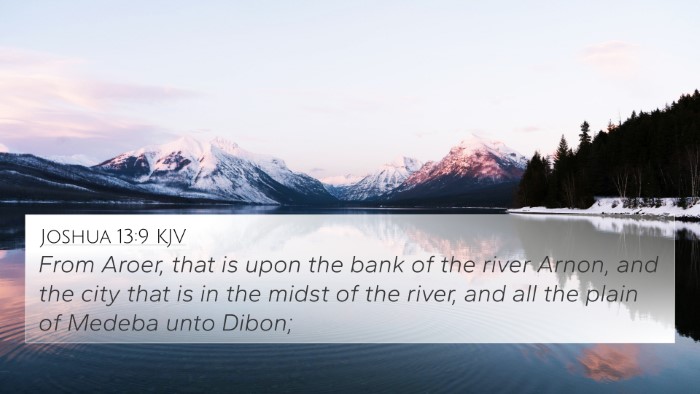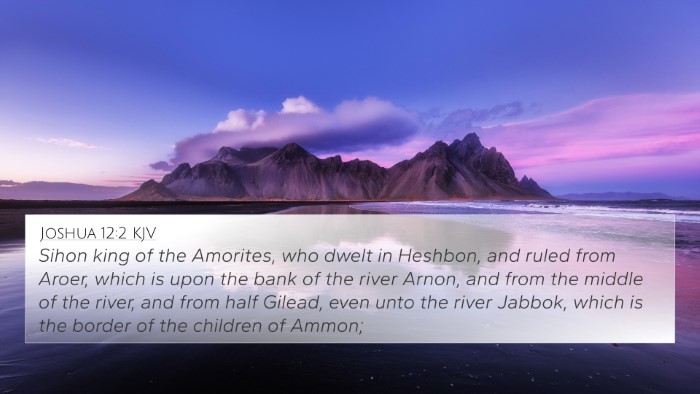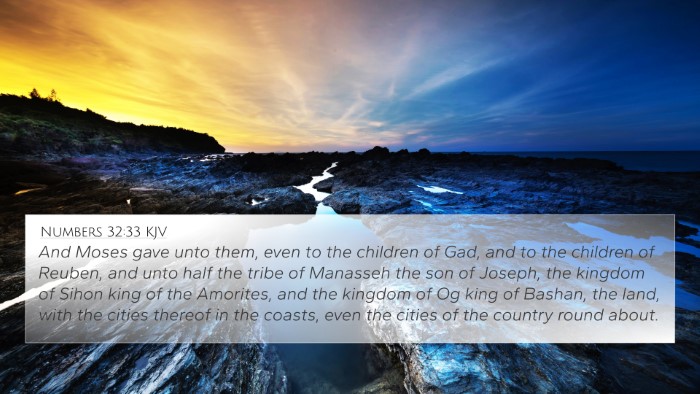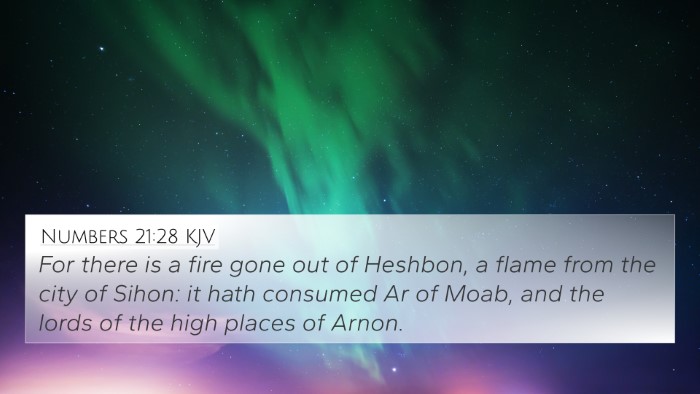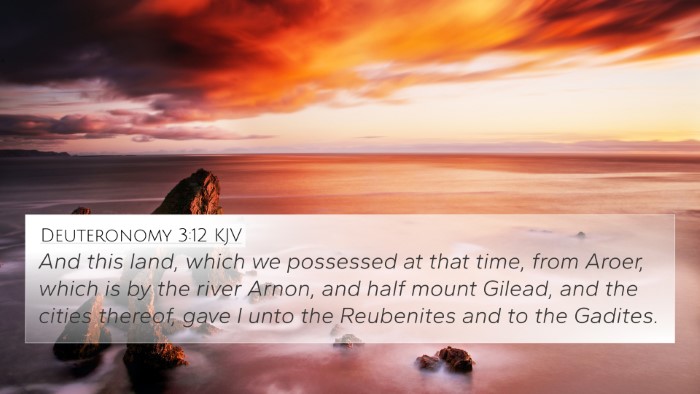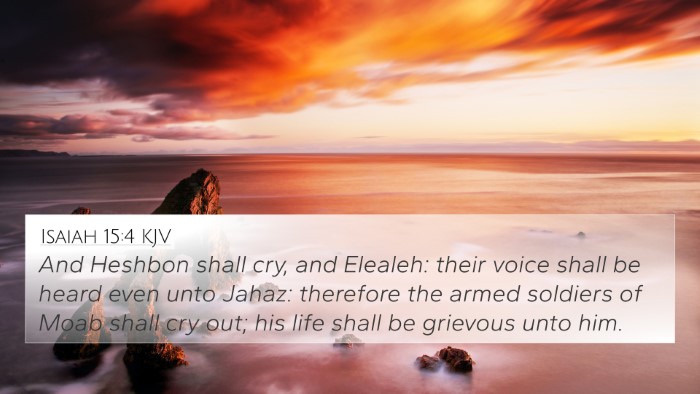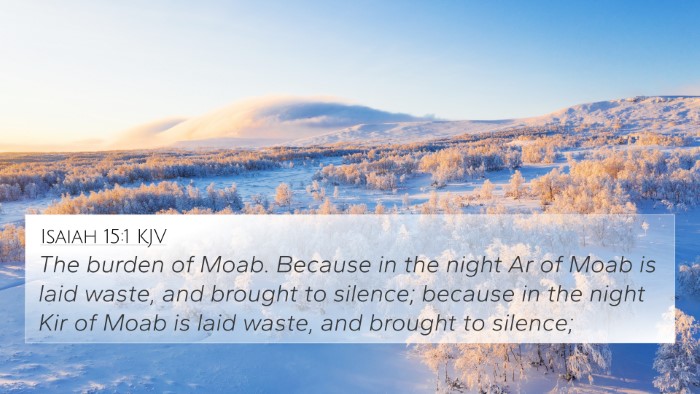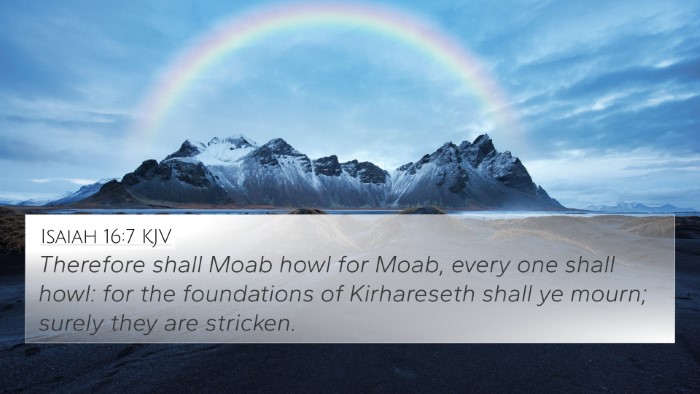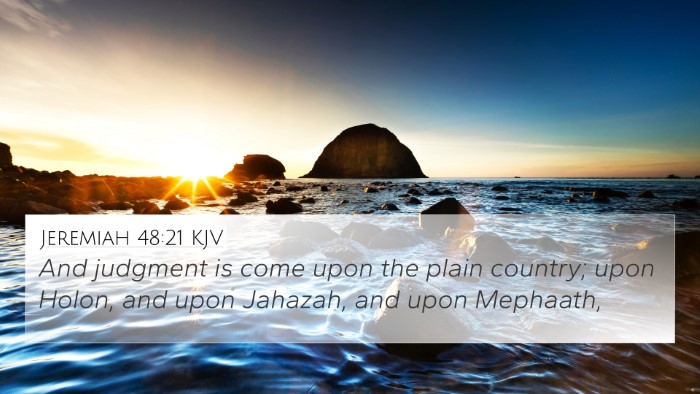Understanding Joshua 13:16
Joshua 13:16 states:
"And half Gilead, and the city of the Giants, which is called Argob, which is in Bashan, which was called the land of giants."
This verse highlights the specific territories assigned to the tribes of Israel, particularly focusing on the region of Gilead and the notable city of Argob. The designation of this region as the "land of giants" reveals significant historical and cultural context regarding the inhabitants of that land.
Contextual Analysis
In the context of the overall narrative in the book of Joshua, this verse is part of the extended allocation of land to the tribes of Israel following their conquests in Canaan. Joshua is recounting the areas that remain to be conquered and establishing boundaries for the tribes.
Public Domain Commentaries Insights
-
Matthew Henry:
Henry emphasizes the importance of God's promise to the Israelites and notes that this land, once inhabited by giants, represents both a challenge and a fulfillment of God's covenant to Abraham. He highlights the idea that the allocation of land is a testament to God's faithfulness and the significance of remembering and acknowledging God's hand in their history.
-
Albert Barnes:
Barnes provides detailed explanation on the geographical distinctions of Gilead and notes how the cities in this region held importance in the tribal divisions. He elaborates on Argob as significant for its fortified cities and its strategic position, illustrating that it embodies both danger and opportunity for Israel.
-
Adam Clarke:
Clarke offers insight into the term "Giants," which refers to the Rephaim, a group of formidable warriors said to inhabit the land. He discusses the underlying theological implications of dispossessing such strong foes and the lessons on faith and divine assistance drawn from Israel's historical confrontations.
Biblical Cross References
This verse is interconnected with various themes and passages throughout Scripture. Below are some crucial cross-references:
- Genesis 14:5 - The account of the Rephaim, illustrating their historical presence in the land.
- Numbers 32:39-40 - The allocation of Gilead to the tribes of Reuben and Gad, establishing its importance even before its mention in Joshua.
- Deuteronomy 3:11 - Describes Og, the king of Bashan, indicating the size and strength of its inhabitants, further affirming the “land of giants” reference.
- 1 Chronicles 5:11 - Reinforcement of the settlements in Gilead, showing the continuity of the land’s significance.
- Deuteronomy 3:13 - Acknowledges the division of territories, linking it to Joshua’s distribution of land.
- Amos 2:9 - A prophetic reference to the strength of the region, indicated by its former giants.
- Matthew 17:20 - An indirect connection illustrating faith that can overcome mountains, relating to the giants in the land.
Thematic Connections
The themes present in Joshua 13:16 resonate through various narratives in Scripture, prompting a deeper understanding of God's continual promise and the challenges faced by His people.
- Divine Promises: The faithfulness of God in supplying the needs of His people and the fulfillment of His promises.
- Overcoming Adversity: The narrative encourages believers to triumph over seemingly insurmountable challenges, as seen in the faith of the Israelites against the giants.
- Identity and Heritage: Understanding the significance of land as central to identity; this theme continues into the New Testament where believers are assured of their inheritance in Christ.
Applying Cross-Referencing Methodologies
Utilizing cross-references can enhance biblical study significantly. The following tools and methodologies may aid in your exploration:
- Bible Concordance: A vital resource for locating specific verses and themes.
- Bible Cross-Reference Guide: Guides help connect scriptures and provide thematic studies.
- Cross-Referencing Bible Study Methods: Systems such as topical studies can deepen understanding of thematic connections across verses.
Conclusion
Joshua 13:16 serves as a reminder of God's overarching plan for His people, demonstrating how territories, challenges, and God’s promises intertwine. A deeper exploration of this verse using tools for cross-referencing can unveil the unity and coherence of biblical narratives.
